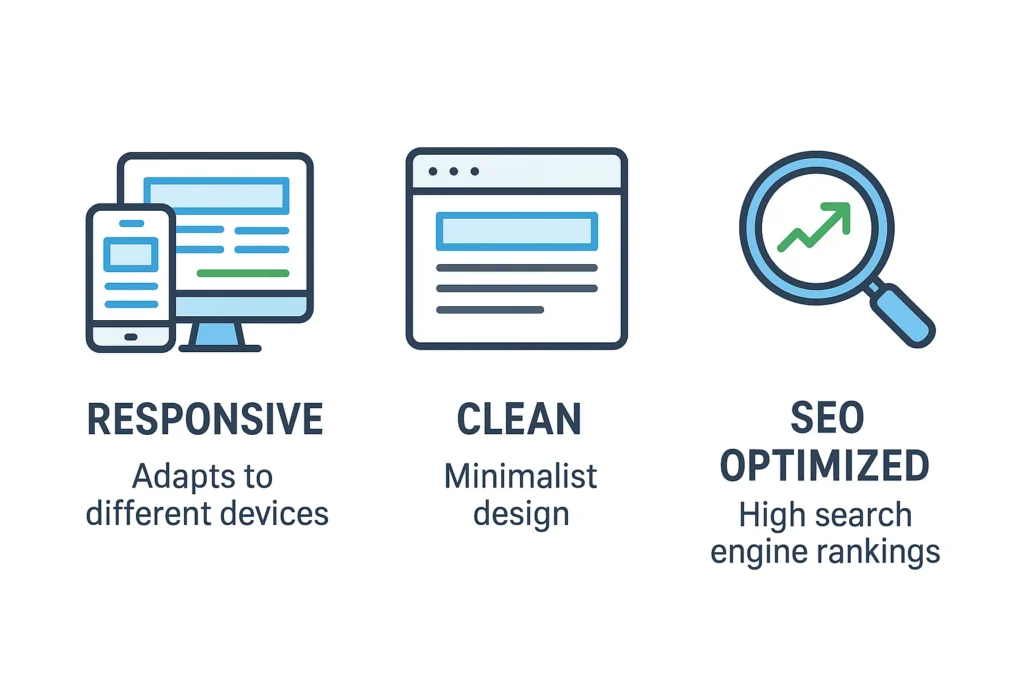In the modern, digitally driven era, your website frequently serves as the first encounter customers have with your brand. But a beautiful design alone isn’t enough. You need a site that is clean, responsive, and SEO friendly to truly stand out and attract the right audience.
Let’s break down what each of these terms means and why they matter for your online success.
1. What is a Clean Website Design?
A clean website design focuses on simplicity, clarity, and purpose. It avoids unnecessary clutter and guides the user’s attention to what matters most.
Key traits of a clean website:
- Minimalistic layout with plenty of white space
- Consistent colors, fonts, and branding
- Easy to read typography and clear headings
- Logical content flow for effortless navigation
A clutter free design not only looks professional but also improves user experience, making it easier for visitors to find what they need without frustration.
2. Why Responsiveness is Non Negotiable
In today’s age, a high percentage of the web traffic driven from mobile devices, hence responsiveness of a website is more than essential now the ever before. A responsive design automatically adapts to different screen sizes, ensuring your site looks and works perfectly on desktops, tablets, and smartphones.
Benefits of a responsive website:
- Improved user experience on all devices
- Higher engagement and lower bounce rates
- Better rankings in Google’s mobile first indexing
- Increased conversion rates from mobile visitors
By prioritizing responsiveness, you make sure every visitor has a seamless browsing experience, no matter how they access your site.
By prioritizing responsiveness, you make sure every visitor has a seamless browsing experience, no matter how they access your site.
3. Building an SEO-Friendly Website
SEO (Search Engine Optimization) is the process of making your site visible to search engines so it appears higher in search results. An SEO friendly website ensures your hard work in design actually reaches your audience.
Core elements of SEO friendly design:
- Fast loading speed (optimized images, minified code, caching)
- Keyword rich, descriptive titles and headings
- Clean URL structure (e.g., /services/web-design)
- Use of alt text and meta tags with relevance
- Mobile optimization and secure HTTPS connection
- Internal linking to guide visitors and search engines
When your website is optimized for SEO, you not only attract more visitors but also improve the quality of traffic, people who are actively searching for what you offer.
4. The Perfect Balance: Clean, Responsive, and SEO Friendly
The real magic happens when your site blends all three principles:
- Clean design keeps visitors engaged.
- Responsive design ensures everyone can access your content easily.
- SEO-friendly design helps the right people find you.
This balance leads to a powerful online presence that boosts brand credibility, increases conversions, and builds long-term growth.
Final Thoughts
In 2025, success online isn’t about flashy animations or endless text it’s about delivering clarity, accessibility, and visibility. In today’s online world, a clean, responsive, and SEO focused site is more than design, it’s your business foundation.
A website that’s outdated, tricky to navigate, or invisible online is costing you customers time to act. The sooner you optimize for both people and search engines, the sooner you’ll see measurable results in traffic, engagement, and revenue.

